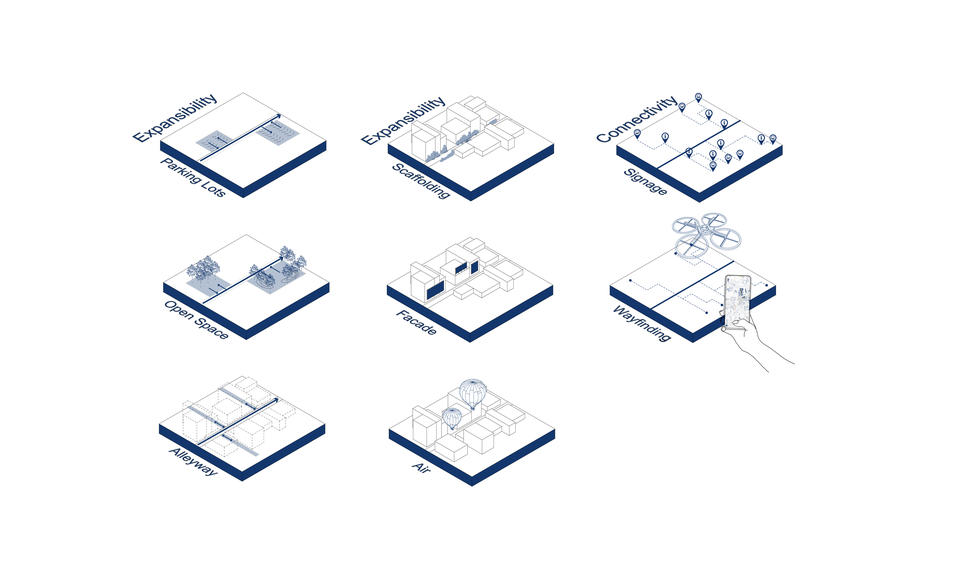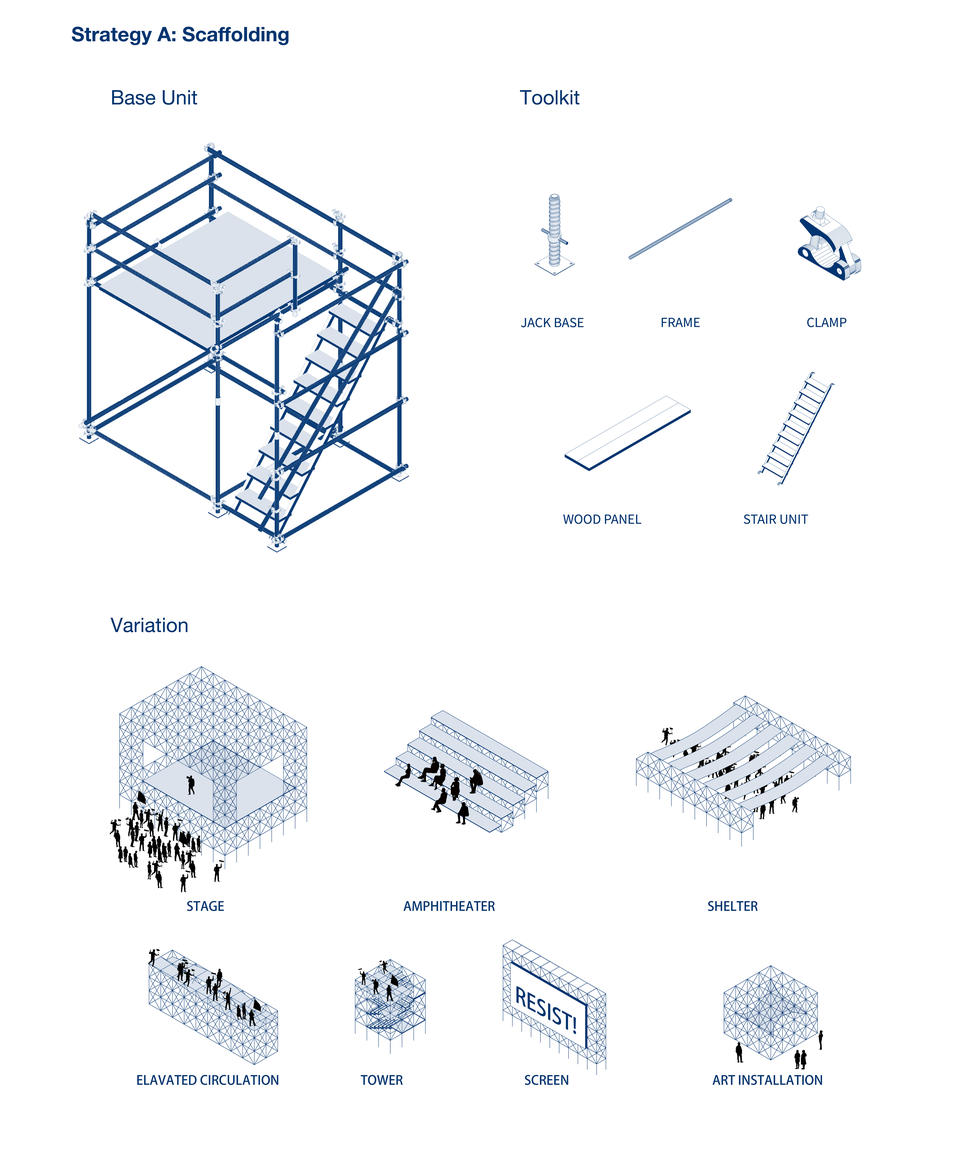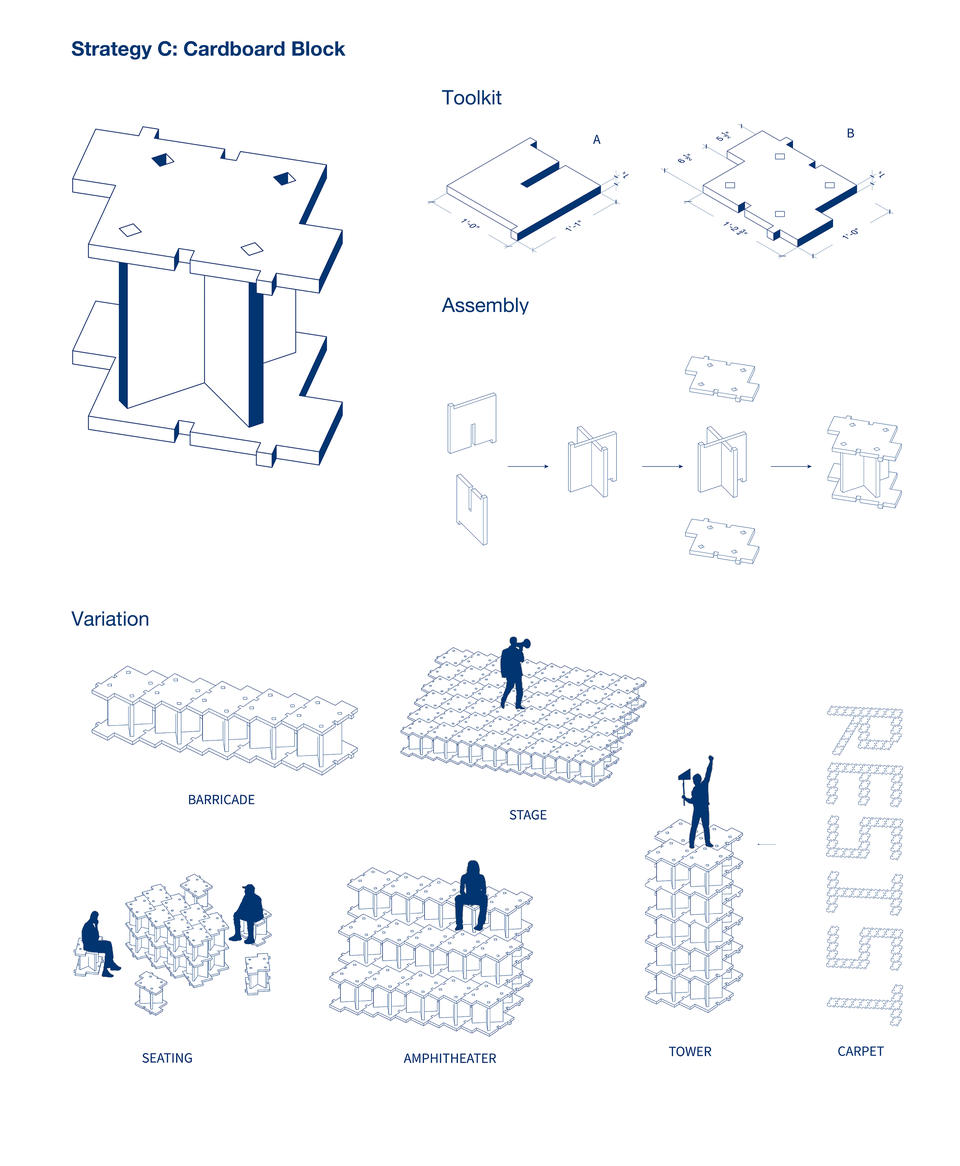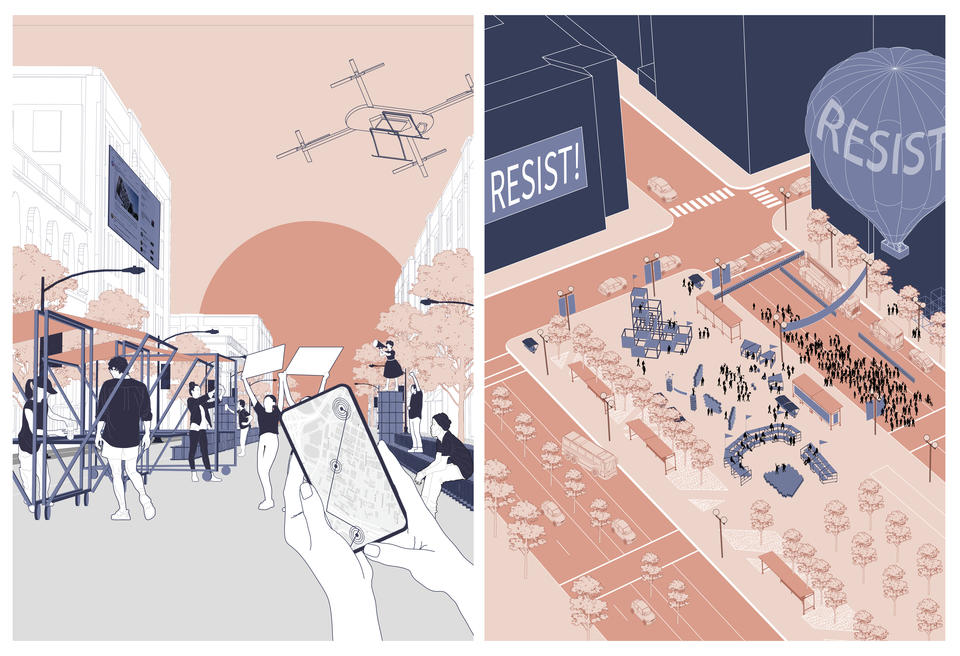Ziyu Wang
Landscape of Resistance: Reimagining Public Space for a Vibrant Socio-Political Life
We are now in an era of necessary dissent and protest. The emergency of the COVID-19 pandemic, alongside the escalating trend of activism for women's rights, environmental justice and racial justice has coincided and created a new wave of protests worldwide. In most societies, protest is a legitimate and imperative way for the general public to seek redress for injustices that decision-makers usually ignore. In light of the concern with shrinking democracies, people often find they need to mobilize to contend for their rights and to impact the decision-making processes affecting their lives.
This thesis aims to investigate the spatial and material relationships between protests and public space. It examines theoretical concepts from phenomenological and spatial theories to evaluate how protests are affected by the built environment where they happen.
Subsequently, the study focuses on three scales of examination – urban systems (macro), spatial features of the site (meso), and physical objects used in protest to inform certain behaviors (micro) – to answer a series of fundamental questions involved in the choices, qualities and struggles involved in places for protest. Finally, the thesis proposes multi-scalar strategies for the public space to be able to support protests more adequately, and to eventually sustain a more vibrant social-political life in cities.
Image

Escalating Trend of Protest Worldwide
2022
We are living in an age of global mass protest that are historically unprecedented in frequency, scope and size. According to the analysis of CSIS, “the frequency of mass protest has increased by an annual average of 11.5 percent since 2009 worldwide, and the size and frequency of recent protests eclipse historical examples of eras of mass protests, such as the late-1960s, late 1980s, and early 1990s.” In the United States, while each protest took place in a unique context, common grievances are around human rights, economic injustices, and racial injustices.
Image

Protest History in the US.
Throughout American history, peaceful protesting — which is protected under the First Amendment and is an act of patriotism — has been utilized to advocate for and lead to changes.
Image

Macro-Scale Analysis
In the case of BLM protest in New York City, I compared the actual protest route with the fastest route from the starting point to the destination, to understand how the macro-level city systems (such as land use and jurisdiction) are affecting people’s choice and planning of the protest route.
Image

Spatial Analysis (Meso)
In the case of BLM protest in providence. I conducted street level analysis to understand types of street edges and how the street edge permeability affects people’s behaviors and movement.
Image
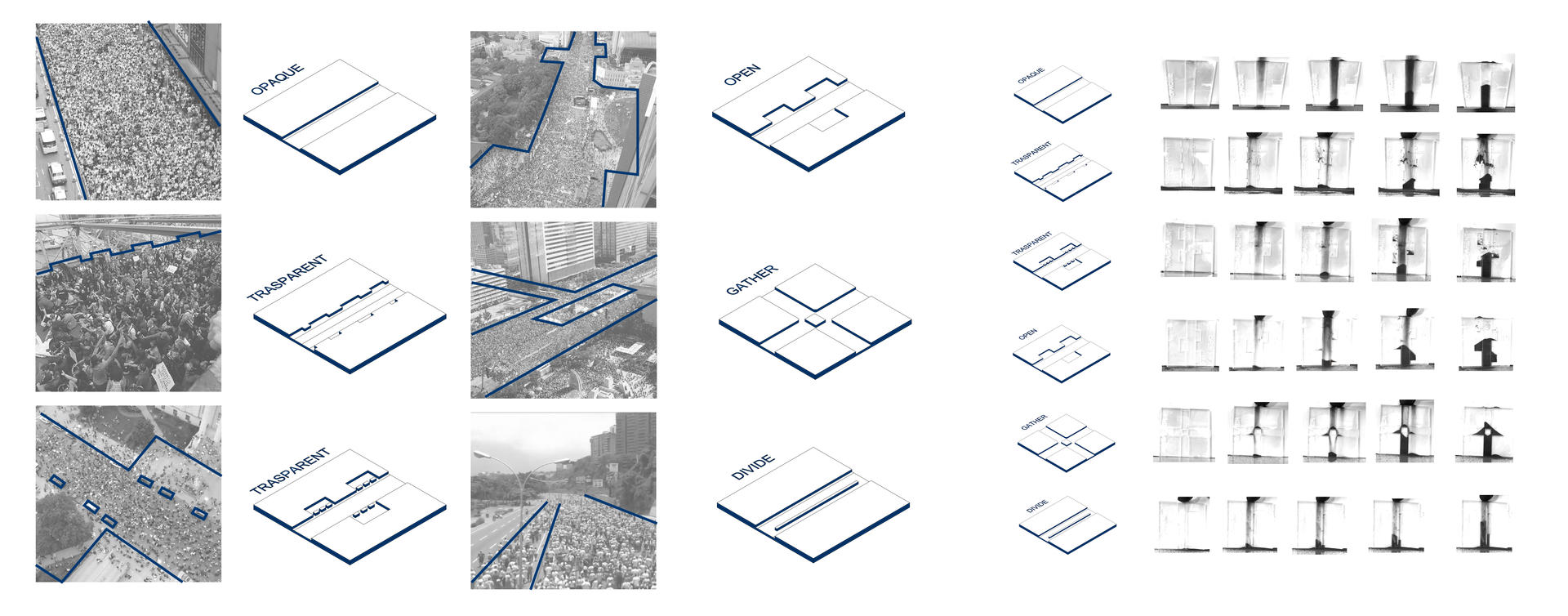
Model Test: Street Condition and Human Flow
By abstracting the spatial configurations of different streets, I ended up with six scenarios models. With each model, I run the sand through the model to mimic the human flow. The results suggest that streets associated with urban voids have the ability to slow down the human flow and generate more “stay” moments during the protest.
- Architecture
- Ceramics
- Design Engineering
- Digital + Media
- Furniture Design
- Global Arts and Cultures
- Glass
- Graphic Design
- Industrial Design
- Interior Architecture
- Jewelry + Metalsmithing
- Landscape Architecture
- Nature-Culture-Sustainability Studies
- Painting
- Photography
- Printmaking
- Sculpture
- TLAD
- Textiles
